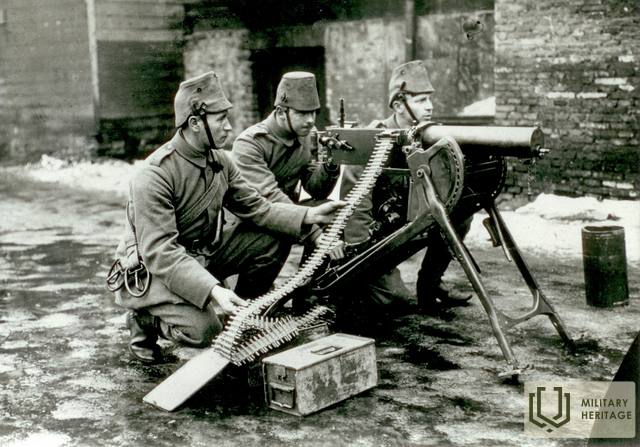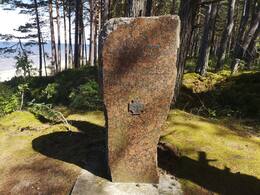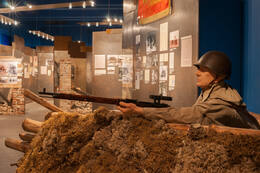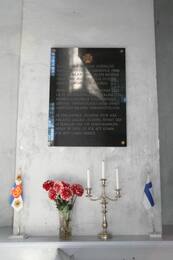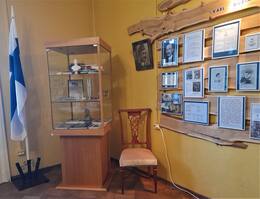About Finnish Jaegers in Latvia
The history of Finnish Jaegers is interesting because it is extremely similar to the fate of Latvian soldiers in World War I and its great role in the formation of the nation state. For the Finns, World War I also provided an opportunity to lay the foundations for Finland's independence and the creation of its army. The source describes an event when a monument to Finnish Jaegers is unveiled in Latvia.
“On September 7 of this year, in Klapkalnciems by the sea, approx. 15 kilometers from Smārde station rested 5 riflemen of the 27th Finnish Jaeger Battalion: FV Heinonen, Viktor Kami, Emil Kantola, Eikars Minti and Konrad Persson, who fought in the Great World War as volunteers and fell in 1916. The Finnish government wanted to erect a monument to these fighters and thus honor those who hoped to win their independence. As the Latvian Defense Society had already built a monument to Finnish riflemen near Galiņi's house (in the Olaine area) in 1925, the Finnish Riflemen's Union, through the local Finnish embassy, asked the society to build a monument in Klapkalnciems to promote good Latvian-Latvian relations. The granite components of the monument were brought from Finland and had to be transported with great difficulty to the seaside of the village of Klapkalns, along the bad roads. After weeks of work and considerable expense, the monument was erected and its surroundings decorated. on the day of consecration, (September 7) the following went to Klapkalns: the Finnish ambassador to Latvia Hininen, the chief of the Finnish General Staff, Colonel V allenius, who is also the chairman of the Finnish Riflemen's Union; Head of the Information Department, Lieutenant Relanders, Military Representative, Col. Helsinki; Finnish merciful sisters and guards Munk and Rompanen; Colonel Hartmanis, Deputy Chief of Staff of our Army Commander, with Adjutant, Captain Kalniņš and members of the Board of the Latvian Defense Society. There were problems on the road with cars that broke down due to bad roads, could not cross broken bridges and ramps. Riders arrive at the party with a delay of 3 hours. Residents gathered in large numbers. Our and Finnish flags fly in high corners in the four corners of the monument; the poles are adorned with garlands and flowers made by diligent climbers, despite the bad, rainy weather. The celebrations were opened by Finnish Ambassador Hininen, in Finnish and German, explaining the significance of the monument and sincerely thanking the Board of the Latvian Defense Society for its efforts in erecting the monument. The messenger puts the gorgeous wreath with the Finnish national ribbon. Colonel Valenius then speaks and concludes his speech in Latvian, saying the following significant words: Citizens of Latvia, you have freed your land in fierce battles, just like we Finns, so that the monument reminds us of the value of our freedoms and our precious purchase. We will never give up our independence. "
It should be noted that the Chief of the General Staff of Finland, Colonel Vallenius and Lieutenant Colonel. Relanders both fought in the ranks of the Jaegers and straight in this battlefield and therefore delayed and remembered their battles. Far away, the Finnish guests sincerely thanked the owner of the local Saklaušku house, Alvīna Guņa, and her husband for the diligent care of the graveyard and continue to entrust them with these duties. The participants of the celebration returned to Riga through Tukums, because the road is better there. ”
Newspaper "Guard". Unveiling of monuments to fallen Finnish riflemen in Klapkalns. 1929
Related timeline
Related topics
Related objects
Monument in the memory of Finnish jaegers-sappers
Located in Engure district, on the side of the A10 motorway near Smārde pub.
A memorial was erected on the site where the Battle of Smārde took place in the field in 1916 during the First World War. A company of Finnish Jaeger engineers (~ 200 men) took part in the battles as part of the German army. Smell's Day has become an official holiday for the Finnish Army's military engineers, which is still celebrated.
The Finnish Jaegers were a unit of the German army formed during World War I. It consisted mainly of nationally-minded Finnish volunteers who had left the territory of the Russian Empire, Finland. The Battle of Smārde was one of the most important offensive battles of the Finnish Jaegers, where a new tactic was used at that time.
A month after the incident, the Russian army attacked the German army near Smārde. Latvian combat units carried out reconnaissance around Smārde, built a supply road “Latviešu ceļš” across the bog and took part in battles. Around 300 Latvian fighters fell in the battles. Like the Finnish Jaegers in the German army, the Latvian riflemen in the Russian army were the founders of their national states and armies.
Latvian War Museum
The Latvian War Museum is located in the Old Town not far from the Freedom Monument in a historic defence building called the ‘Powder Tower’. There are 11 exhibits in the museum. There are various weapons, documents, uniforms, awards, badges and other items detailing the everyday life of a soldier in war. The Latvian War Museum is one of the oldest museums in Latvia. Its origins can be found in World War I. Museum’s collection was made up mainly of personal items of soldiers or items found on battlefields. After Latvia gained its independence the main goal of the museum became to create an exposition on the military history of Latvia and the active role of the population in protecting their land. In 1937 the museum was expanded and was technically one of the most modern museums in Europe at that time. The Powder Tower was one of the fortification towers of Riga. Some evidence dates back to 1330 where it has been mentioned as the ‘Sand Tower’. The tower was destroyed in 1621 when Riga was besieged by the Swedish Army. But in 1650 a new tower for storing gunpowder and weapons was built. After the city’s fortifications were taken down, the Powder Tower remains as one of the most important pieces of evidence of the Riga defence system.
Memorial plaque to the Finnish Jaegers in the Holy Trinity Cathedral in Liepāja
A memorial plaque dedicated to the Finnish Jaegers is located in Liepāja Holy Trinity Cathedral, Lielā iela 9.
The Finnish Jägers were a unit of the German Empire, formed by volunteers from Finland, which, under the name of the 27th Royal Prussian Jäger Battalion, took part in the First World War battles on the Eastern Front of Latvia in 1916-1917.
During World War I, the Grand Duchy of Finland was part of the Russian Empire and many Finns wanted a German victory in the war in order to promote the establishment of an independent state. On 20 November 1914, the Finnish Independence Movement was founded in Helsinki, which also planned to form the armed forces of an independent state. When the German government confirmed its readiness to train the Finns in January 1915, the recruitment of volunteers began and by the spring of 1916 almost 2,000 soldiers were stationed in Germany and were named the 27th Royal Prussian Jäger Battalion.
From June 1916 the battalion was on the Riga front, when it was moved to Liepaja until March 1917. After the February Revolution, the Russian Empire began to collapse and on 6 December 1917 the Finnish Parliament declared independence.
On 13 February 1918, the Battalion swore allegiance to Finland in the Holy Trinity Church in Liepāja. On 15 February 1918, the battalion left the port of Liepaja by ship to return home to the port of Vasa and take part in the Finnish Civil War against the Reds, who had staged a coup d'état on 27 January 1918. The well-trained and combat-experienced Jägers formed the core of the Finnish national army and a large number became commanders during the Second World War.
The battalion's flag, consecrated in Holy Trinity Church, became the first flag of independent Finland.
Collections of the Apriķi Museum and areas of activity of the Red Partisans
The Apriķi manor house houses the Apriķu Museum, whose exhibits tell about the ancient history of the region. The museum exhibits an exposition about the Finnish military figure Karl Gustav Mannerheim - 175 museum items, the interactive stand "KGMannerheim and Apriķi" (in three languages - Latvian, English and Finnish) with 6 sections - about the Apriķi manor, about KGMannerheim as a commander in the Winter War, as the freedom of Finland the leader of the battles and about his connection with the Aprikais.
The museum also displays World War II items with symbols of the German and Red Army, as well as a map - the areas of activity of the Red Partisans) and descriptions of the Red Partisans.
The Baroque ensemble of the Aprikku manor (Apprikken) building was formed by the Alokste River in the 18th century. at first. 20th century in the beginning, the owner of the manor is Carl Gustav Mannerheim, who later became the president of Finland, and is known as the author of the legendary Mannerheim line - the fortification system during the Winter War.




